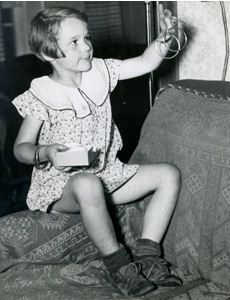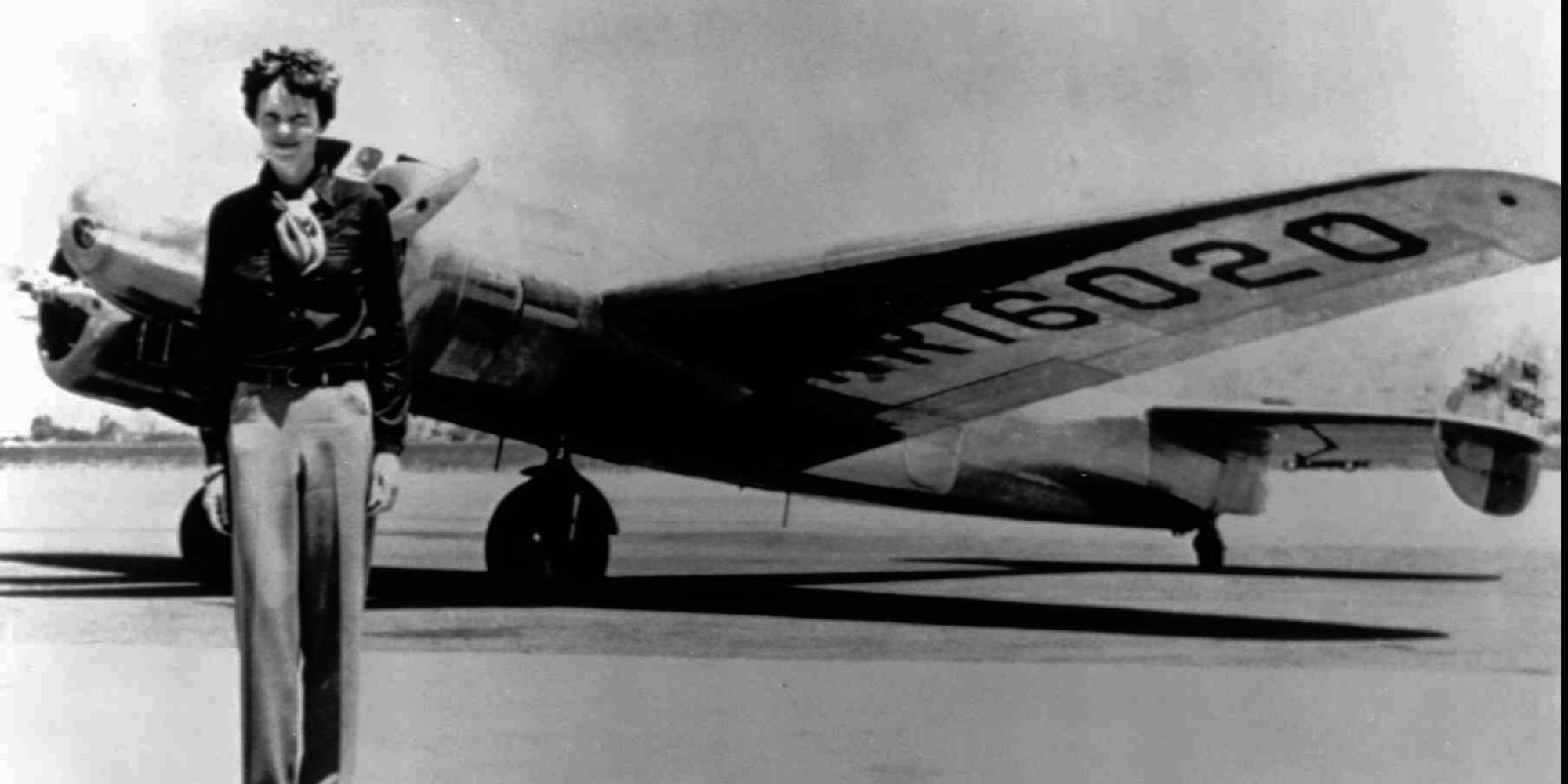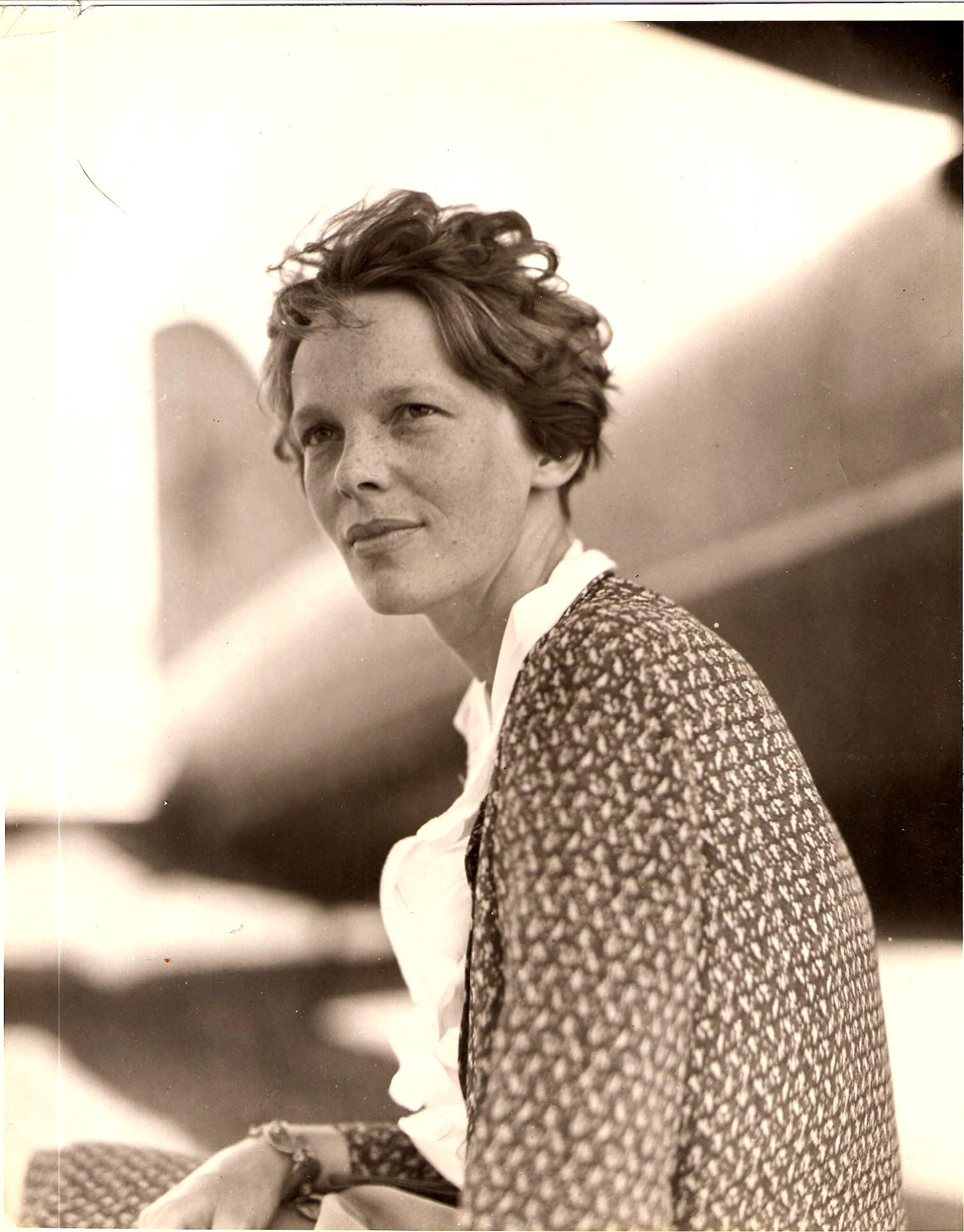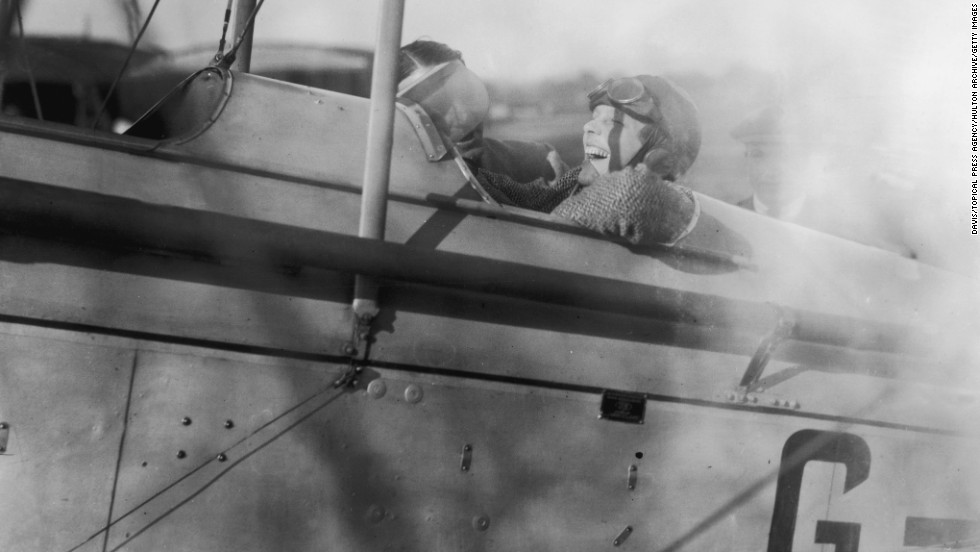By Margueritte Peterson
Most of our blogs are about books, bookish things, about author holidays or birthdays, about book fairs and bibliophilia. However, sometimes we like to report on important or significant historical events. Often, those close to our heart (or our homes). So tomorrow, on the 82nd anniversary of her first completed solo flight from Honolulu to Oakland (right next door to Tavistock Books!), we’d like to ask an important question… What happened to Miss Amelia Earhart?
 Amelia Mary Earhart was born on July 24th, 1897 to a family in Atchison, Kansas. She lead a somewhat average childhood. As the eldest surviving child in the family, she played the role of the ringleader well and was often in charge of her younger sister, Grace. “Meely”‘s only slightly unconventional aspect of her childhood was that her mother, Amy Earhart, did not believe in forcing manners or or tradition on her daughters! She didn’t not believe that parents should be shaping their children into “nice” little girls, and gave her two daughters a freer reign than their childhood friends would have known. This gave Amelia the chance to express her true tomboy nature and her family (or at least her mother) embraced it. In 1904 at the age of 7 Earhart completed her first (not quite successful) solo flight with the aid of an uncle. She put together a home-made ramp fashioned after a roller coaster she had seen, and placed the ramp on the roof of the toolshed at her family home. She rode in a wooden box off the ramp, and climbed out of the broken box completely exhilarated!
Amelia Mary Earhart was born on July 24th, 1897 to a family in Atchison, Kansas. She lead a somewhat average childhood. As the eldest surviving child in the family, she played the role of the ringleader well and was often in charge of her younger sister, Grace. “Meely”‘s only slightly unconventional aspect of her childhood was that her mother, Amy Earhart, did not believe in forcing manners or or tradition on her daughters! She didn’t not believe that parents should be shaping their children into “nice” little girls, and gave her two daughters a freer reign than their childhood friends would have known. This gave Amelia the chance to express her true tomboy nature and her family (or at least her mother) embraced it. In 1904 at the age of 7 Earhart completed her first (not quite successful) solo flight with the aid of an uncle. She put together a home-made ramp fashioned after a roller coaster she had seen, and placed the ramp on the roof of the toolshed at her family home. She rode in a wooden box off the ramp, and climbed out of the broken box completely exhilarated!
At this time, however, Earhart was not certain that aviation was her field. She did seem to be drawn to the more male-dominated fields – science and mechanics were the subjects at which she excelled. One story goes that after one of her family’s many moves (her father lost a couple jobs due to alcoholism) she canvassed a town to find the perfect school for herself, basing her decisions on the science laboratories and programs. Her first real job came in 1917 after a trip to Toronto to see her younger sister (who was in school there) when she saw returning wounded soldiers and decided to study as a nurse’s aide from the Red Cross and took care of surviving soldiers during WWI.

In 1920 while visiting her parents in Long Beach, California (the Earharts continued to move and Amelia spent a significant amount of her early 20s living with her sister in Toronto and then Massachusetts), Earhart and her father visited an airfield where pilot and racer Frank Hawks (famous in the day) gave her a $10 plane ride that would forever change Amelia’s life. Immediately after the ride she became determined to learn how to fly and over the next week worked many odd jobs (stenographer, photographer and truck driver, to name a few) to save up what she needed for the $1,000 needed for flying lessons. Her first teacher was Anita “Neta” Snook, a female aviator who trained her students with a “Canuck” (a training biplane also used for teaching the US Army pilots). Almost 2 years later, Earhart flew her first plane (a bright yellow Kinner Airster biplane nicknamed “The Canary”) to an altitude of 14,000 feet and set a new world record for female pilots – the highest one had ever reached! A year later (don’t ask me to explain why it happened in this order… even I don’t understand) she became the 16th woman in the world to be issued a pilot’s license by the Federation Aeronautique Internationale.
Unfortunately, Earhart’s dream of fame and glory would have to wait, as her family’s depleted fortune, parents’ divorce, and a return of a chronic sinus infection that she would suffer from her entire life, forced Earhart to get jobs as a teacher and social worker to support herself and her mother in Massachusetts. She held onto her love of aviation at this time, however, as she laid plans for an organization solely for female aviators and investing a small sum of money in Dennison Airport, Massachusetts.
 Earhart’s fame came spectacularly randomly in 1928, when American citizen Amy Guest decided to be the first woman to fly across the Atlantic ocean (following Charles Lindbergh’s solo flight in 1927). Guest decided that the journey was too dangerous and undertaking for herself, she decided to find a suitable young woman to take her place. One afternoon, Earhart received a call from a Captain Hilton H. Railey, asking her if she would like to fly across the Atlantic ocean. Earhart completed the journey with pilots Wilmer Stultz and Louis Gordon, and was welcomed to both England and back in the United States to rounds of applause, interviews, and even a lecture tour. With the help of George P. Putnam (publisher and publicist who was involved in the original crossing), Earhart remained at the front of the worldwide news, and was marketed as the modern woman. Simple, elegant, intelligent and effective.
Earhart’s fame came spectacularly randomly in 1928, when American citizen Amy Guest decided to be the first woman to fly across the Atlantic ocean (following Charles Lindbergh’s solo flight in 1927). Guest decided that the journey was too dangerous and undertaking for herself, she decided to find a suitable young woman to take her place. One afternoon, Earhart received a call from a Captain Hilton H. Railey, asking her if she would like to fly across the Atlantic ocean. Earhart completed the journey with pilots Wilmer Stultz and Louis Gordon, and was welcomed to both England and back in the United States to rounds of applause, interviews, and even a lecture tour. With the help of George P. Putnam (publisher and publicist who was involved in the original crossing), Earhart remained at the front of the worldwide news, and was marketed as the modern woman. Simple, elegant, intelligent and effective.
In 1929, Putnam proposed to Earhart (six times, I might add) and she finally agreed to marry him. However, Earhart’s ideas of marriage were as unconventional as her mother’s ideas on pantaloons were! Earhart delivered a letter to Putnam on their wedding day stating “I want you to understand I shall not hold you to any midaevil [sic] code of faithfulness to me nor shall I consider myself bound to you similarly.” Wowza! Earhart kept her name and held onto the idea that men should not be the sole breadwinners in a household.

The next few years held many firsts for the young aviator. Earhart became the first female to follow Charles Lindbergh’s solo flight from Newfoundland to Paris, but due to unexpected winds and electrical issues she was forced to land on a field in Ireland. Despite the route change, she was still the first woman to fly solo nonstop across the Atlantic, and for that Earhart received the Distinguished Flying Cross medal from Congress, the Cross of Knight of the Legion of Honor from France, and the Gold Medal of the National Geographic Society from President Hoover. On January 11th, 1935, Earhart became the first aviator in the world to fly solo from Honolulu, Hawaii, to Oakland, California. She didn’t stop in Oakland for long, however, and her trailblazing went on with solo flights from Los Angeles to Mexico City, and then Mexico City to New Jersey. Throughout the early to mid 1930s Earhart had been planning to one day fly around the world, and in 1937 she finally got her wish and began her journey. She left Oakland, California for Honolulu, but on their (she was accompanied by pilots Fred Noonan and Harry Manning, and stunt pilot Paul Mantz) leaving Honolulu they experienced technical difficulties and were forced to abandon the attempt altogether. On her second attempt, leaving first from Oakland to Miami, Florida, and then on to (almost… so close) circumnavigate the world, Earhart and her one crew member Fred Noonan made it all the way across South America, Africa, the Indian subcontinent and parts of Asia all the way to Lae, New Guinea. 22,000 miles of the journey had been completed, with only 7,000 miles left to go over the Pacific ocean. Unfortunately, Earhart and Noonan would never reach their destination of Howland Island where the United States Coast Guard was waiting for them. They had difficulty reaching the USCG with the radio, could not find Howland, and many issues contributed to an inability to land safely where anyone knew where they were. They ran out of fuel searching for Howland, and disappeared.
There are many conspiracy theories of what happened to Earhart, but most recent evidence shows that she and Noonan may have been able to land the plane on nearby deserted Nikumaroro island, where recently plane remnants and the bones of a female were found. Was Earhart able to land successfully on the island, and lived out a few months as a castaway? Perhaps we will never know. Then again…
(You didn’t really think I was going to be able to shed any light on what really happened to A.E., did you? Silly rabbit.)

